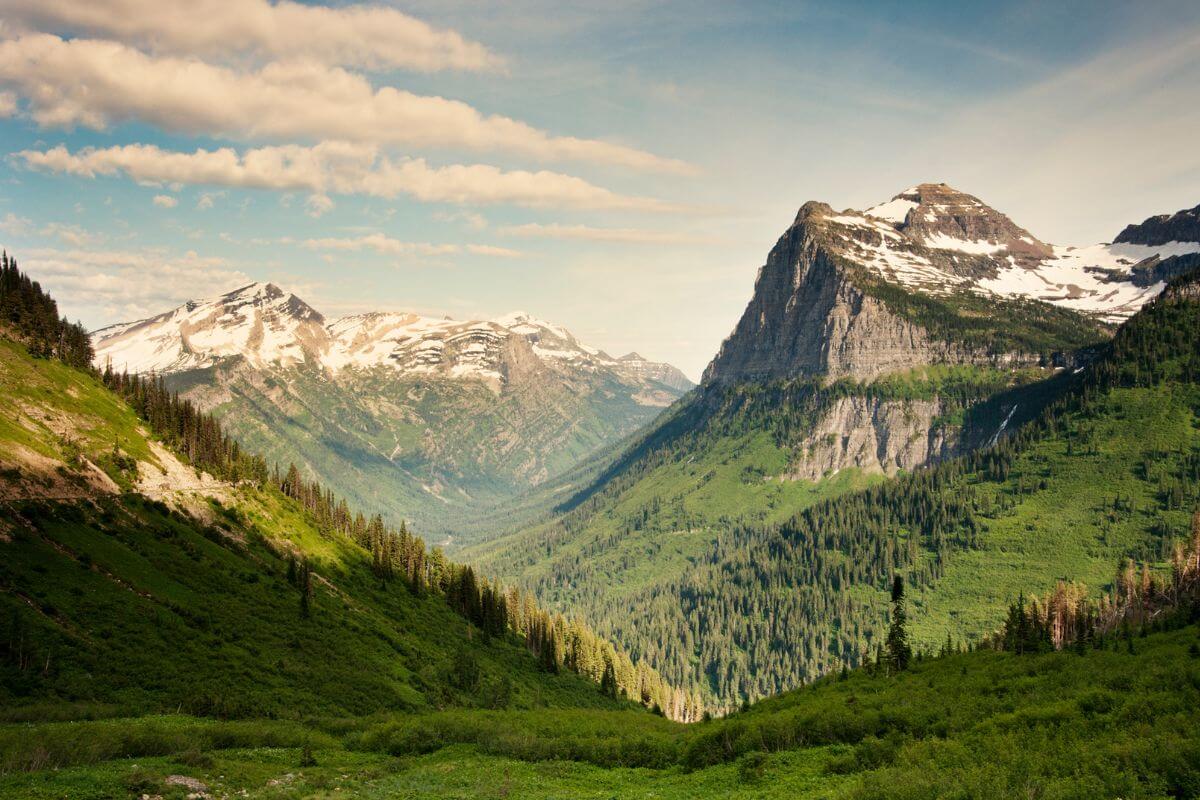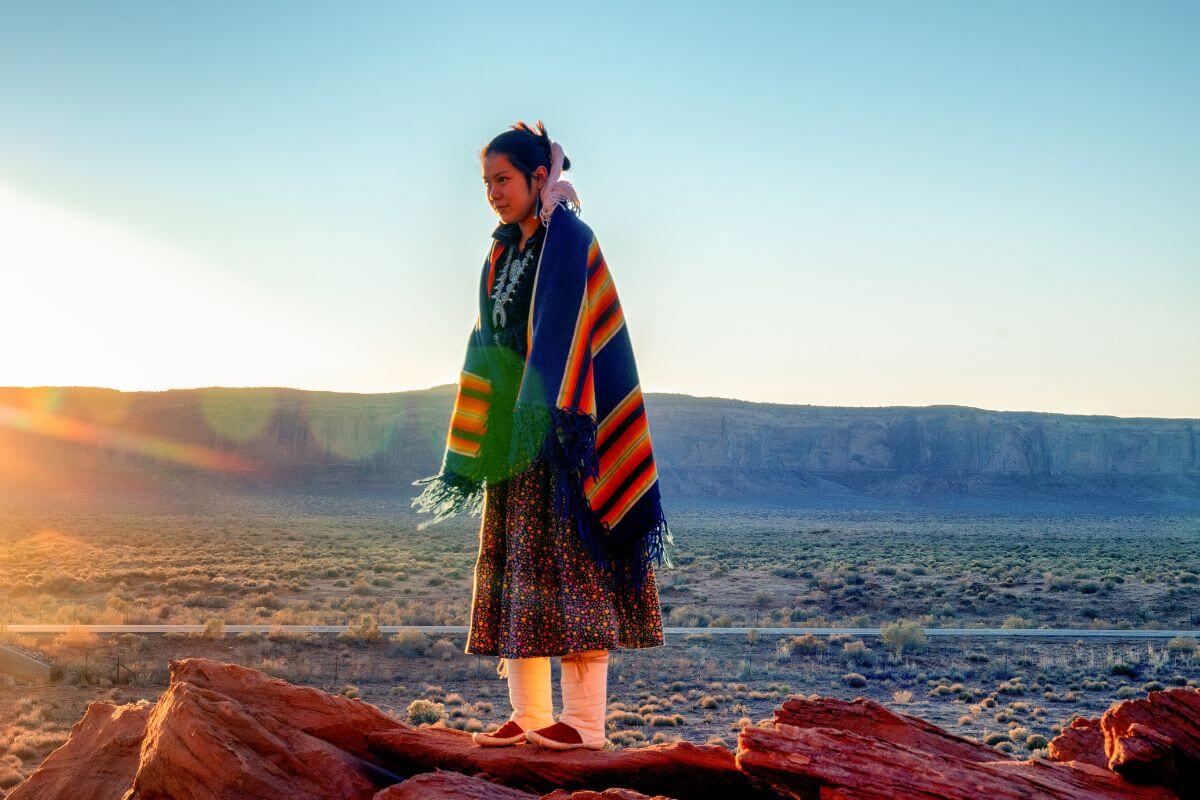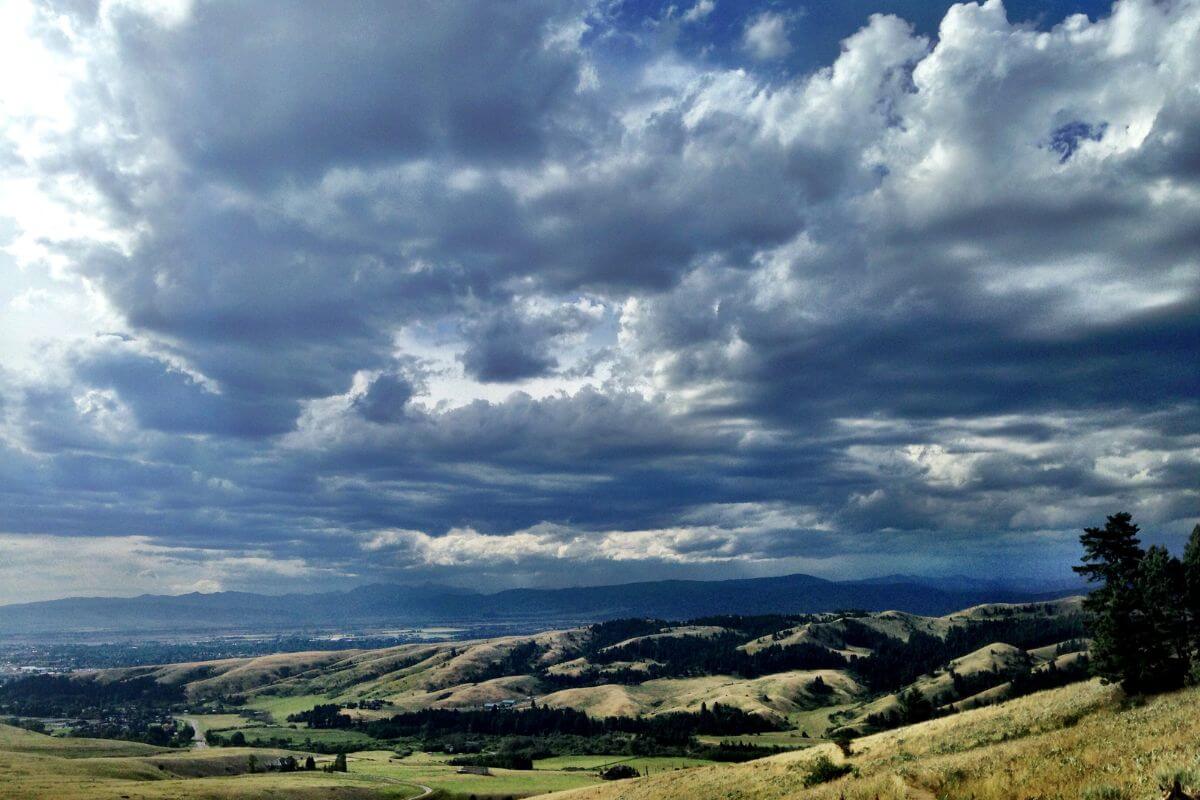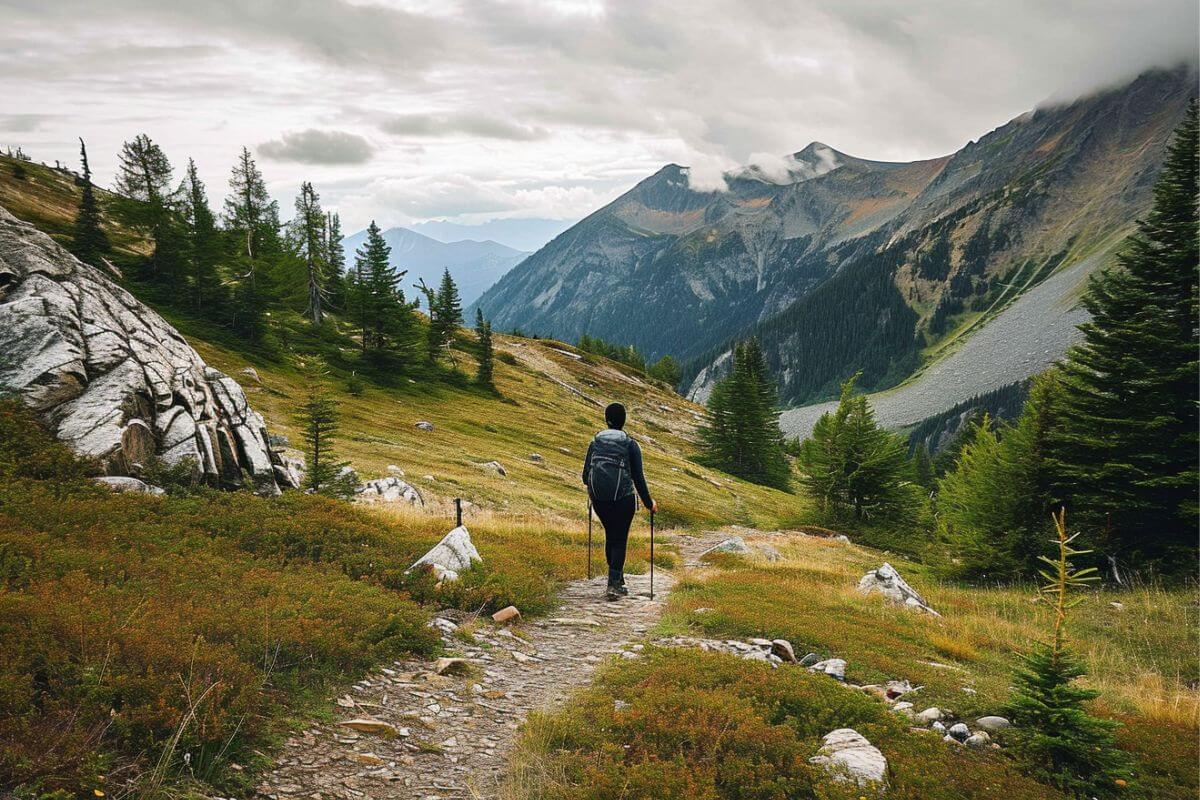Planning a trip to Montana? Before you pack your bags, let’s talk about the latest Montana travel restrictions. With the pandemic, it’s crucial to stay informed about any guidelines or protocols that might affect your visit.
As of now, Montana doesn’t have any statewide travel restrictions due to COVID-19. However, it’s important to note that travel restrictions might vary at the state’s seven Native American reservations.
So, if you’re planning to explore the rich cultures and landscapes of these reservations, it’s a good idea to familiarize yourself with their specific travel guidelines.
Now, you might be wondering about the nitty-gritty details. Can you travel freely within the state? Are there any testing requirements? What about mask mandates? Don’t worry; we’ll cover all of that and more in this comprehensive guide.
- Related article: Montana Travel Recommendations
Whether you’re a local Montanan or an out-of-state visitor, this information is essential for a safe and hassle-free trip. So, let’s dive in and uncover everything you need to know about the latest Montana travel restrictions.
7 Key Takeaways on Montana’s Travel Restrictions
- Montana’s COVID-19 travel restrictions are currently minimal, but guidelines may differ on Native American reservations, so respect their regulations.
- A new vehicle reservation system coming in 2024, primitive camping is available, and services are limited in the off-season.
- Each reservation has unique regulations, from permits to marijuana policies, so research and respect their rules.
- Montana Travel Etiquette: Leave no trace, respect wildlife, and practice fire safety to preserve the state’s natural beauty.
- Montana’s Seven Reservations: Each offers a distinct cultural experience, but understanding their regulations is crucial for a respectful visit.
- Compared to other states, Montana has fewer COVID-19 limitations, but remember to always stay informed through official sources.
- By respecting Montana’s landscapes and communities, we can ensure a harmonious and sustainable travel experience.
COVID-19 Travel Restrictions

As of the latest information available, there are currently no statewide travel restrictions in Montana due to COVID-19. However, travel restrictions might vary at the state’s seven Native American reservations.
As of my last update, Montana has reported 333,758 COVID-19 cases and 3,712 deaths. On a positive note, approximately 59% of the population, or 633,531 individuals, are fully vaccinated.
What to know about COVID-19 testing for travel in Montana:
- Testing is available at various locations, including urgent care centers and medical clinics.
- Some sites offer testing specifically for travel purposes, so it’s a good idea to call ahead and confirm.
- The state provides a detailed list of travel testing locations, the types of tests offered, and contact information for each facility.
Now, let’s talk masks. The state doesn’t currently require them, and you can even ditch the face covering on public transit. But as always, it’s wise to keep an eye on the ever-shifting COVID-19 landscape in Montana, so stay tuned to official sources for the most recent updates.
You can refer to the latest guidelines from the Montana Department of Public Health and Human Services website for details on quarantine requirements or to determine if it’s necessary in the first place.
Montana is open for travel, but it’s still a good idea to be mindful of the COVID-19 situation, especially if you’re planning a trip to one of the state’s Native American reservations. And remember, a quick call to a testing facility can help ensure a smooth journey.
Visiting Glacier National Park

Glacier National Park, Montana’s crown jewel, is a must-visit destination. While you don’t currently need vehicle reservations from October to April 2024, a new vehicle reservation system is on the horizon.
Starting in 2024, a pilot reservation system will be implemented for the Going-to-the-Sun Road (West Entrance), the North Fork, and Many Glacier from 6 am to 3 pm.
Here are the key details on the new vehicle reservation system:
- Two Booking Windows – Starting January 25, 2024, at 8 a.m. MST on Recreation.gov, reservations can be made 120 days in advance. Additionally, extra reservations for next-day entry open at 7 p.m. MDT on May 23, 2024.
- No Reservation Needed for Apgar – The reservation checkpoint near the park’s west entrance will no longer block access to Apgar, so you can reach the village without a reservation.
Hold on, there’s more! The alpine section of the Going-to-the-Sun Road is closed to vehicles, and ongoing construction from the south end of Lake McDonald to Upper McDonald Creek Road can cause 30-minute delays. For those looking to rough it, primitive camping at Apgar and St. Mary Campgrounds is available.
While some services are limited during the off-season, you can still find restrooms and potable water at the Apgar Visitor Center plaza, which is open 24/7.
However, park concessioners offering lodging, restaurants, boat rentals, horseback rides, and bus tours are closed for the season. To ensure a smooth entry, consider purchasing your $35 vehicle pass in advance.
Glacier National Park is more than just a scenic drive. Here are some other key things to keep in mind for a successful visit:
- Road Conditions – In early summer, some park roads remain seasonally closed, while parts of the Going-to-the-Sun Road are accessible to hikers and bikers before the official opening. The park’s shuttle service serves as point-to-point transportation, lacking narrated tours.
- Wildlife and Weather – In the fall, wildlife is active in Glacier National Park, requiring visitors to stay alert for animals along roads and adhere to speed limits. Given the park’s unpredictable weather, visitors should be prepared for changing conditions and potential cold days.
- Crowds – Glacier National Park is extremely busy during the summer, especially in July and August. Visitors should be prepared for crowds and consider visiting other areas of the park to avoid the busiest areas.
- Safety – Water is the number one cause of fatalities in Glacier National Park, and visitors should use extreme caution near water. Visitors should also be careful around wildlife and always stay at least 25 yards away.
With these insights, you’ll be well-prepared to enjoy Glacier National Park while staying up to date with the latest travel guidelines.
Traveling on Tribal Lands

With their rich history, distinct cultures, and breathtaking landscapes, these territories offer a unique and enlightening travel experience. But before you set out to explore, let’s take a moment to understand the specific travel guidelines and protocols established by each tribal community.
What Are Tribal Lands in Montana?

Let’s take a moment to understand the significance of tribal lands in Montana. These are areas of land that fall under the jurisdiction of Native American tribes, and they are an integral part of Montana’s cultural heritage.
Montana is home to seven American Indian reservations, each with its own unique culture, history, and traditions. Here’s a quick rundown of these reservations:
- Blackfeet Reservation
- Flathead Reservation
- Rocky Boy’s Reservation
- Fort Belknap Reservation
- Fort Peck Reservation
- Northern Cheyenne Reservation
- Crow Reservation
When venturing onto tribal lands, it’s crucial to show respect and be mindful of local regulations and restrictions. These lands are not only home to breathtaking landscapes but also to communities with deep-rooted traditions.
As you plan your Montana itinerary, consider adding a visit to one of these reservations. It’s an opportunity to learn about Native American history, art, and culture firsthand. Just remember to do so with reverence and an open mind.
Things You Should Know Before Visiting Tribal Lands

Before you embark on a journey through Montana’s tribal lands, there are a few essential points to consider. These lands are not only rich in natural beauty but also in cultural significance. Respecting both is of paramount importance. Here’s what you need to know:
- Tribal Permits – If you plan to recreate (camp, fish, hunt, hike, boat) on tribal land, you will need a tribal permit. Visit the respective tribal websites to secure the necessary permits.
- Recreational Marijuana – Possessing and consuming marijuana on Montana Indian Reservations can be complex, dependent on each tribe’s stance on legalization. Despite recreational marijuana legalization in Montana, it still falls under Schedule 1 as per federal law.
- COVID-19 Policies – Tribes may have different COVID-19 policies than the state of Montana. Please know before you go.
- Respecting Sacred Sites – Be mindful and respectful of a tribe’s unique culture, history, and traditions. Some areas of Indian Reservations may be open to residents or members of the tribe only.
- Permits for Non-Members – Non-members must have a valid permit whenever engaged in recreation activities on Tribally owned lands. For example, the Flathead Reservation requires a valid Flathead Reservation Season License for non-members aged 15 to 61.
Remember to research the specific requirements and restrictions for the particular tribe and area you plan to visit. This includes understanding any posted signs and local law enforcement guidelines.
By doing so, you not only ensure a smooth and respectful visit but also contribute to the preservation of these culturally significant lands.
Other Things to Know When Visiting Montana

As you venture into Montana’s vast landscapes, it’s crucial to remember that you’re not just a visitor; you’re a steward of these pristine environments.
Here are some tips to make your journey not only memorable but also sustainable:
- Leave No Trace – This isn’t just about picking up after yourself; it’s about leaving nature exactly as you found it. That means cleaning everything, even down to your fruit rinds and cherry pits.
- Tread Lightly – These principles apply to motorized activities, like off-roading and snowmobiling. Respect the land, stick to designated trails, and avoid disturbing wildlife and vegetation.
- Fire Safety – Montana’s wildland fire seasons can be intense. Always adhere to fire restrictions, and when you do have a campfire, make sure it’s completely extinguished before you leave.
- Respect Wildlife – Montana’s diverse wildlife is one of its biggest draws, but it’s essential to observe from a distance. Never feed the animals or put yourself in harm’s way for a photo.
- Protect Waterways – Whether you’re fishing or boating, take care not to introduce invasive species. Clean your gear and watercraft to prevent the spread of harmful organisms.
- Practice Respectful Tourism – Mutual respect between residents and visitors is the key to a harmonious experience. Be patient, kind, and understanding; you’ll find that Montanans are some of the friendliest.
By following these guidelines, you’ll not only be ensuring a safe and enjoyable trip for yourself but also preserving the beauty and integrity of Montana’s landscapes for generations to come.
Montana Travel Restrictions Final Thoughts

The state has implemented various measures in response to the ongoing pandemic, and it’s important to stay informed before planning a trip.
One of the most common questions I receive is whether out-of-state visitors are required to quarantine upon arrival in Montana. The answer is not straightforward, as it depends on the traveler’s point of origin.
Some states are exempt from the quarantine requirement, while others are not. It’s essential to check the latest guidelines from the Montana Department of Public Health and Human Services before making any travel plans.
Another frequently asked question pertains to the availability of lodging in Montana. Many travelers want to know if hotels, campgrounds, and vacation rentals are open for visitors.
The good news is that most accommodations in Montana are open but with certain restrictions in place. It’s advisable to make reservations in advance and to familiarize oneself with the specific safety protocols at each establishment.
Regarding popular attractions like national parks, most are open, but some may have limited access and additional safety measures. Checking individual attraction websites is recommended for the latest information before exploring Montana’s natural beauty.
Montana Travel Restrictions FAQs
1. Do You Need to Be Vaccinated for COVID-19 to Go to Montana?
There is no requirement for COVID-19 vaccination to enter Montana. However, the Montana Department of Public Health and Human Services recommends getting vaccinated against COVID-19.
The state of Montana is offering COVID-19 vaccines, and individuals can check with their primary care physician’s office to see if COVID-19 vaccinations are offered.
2. What COVID-19 Vaccines Are Mandatory in Montana?
There aren’t specific COVID-19 vaccines mandated across Montana.
However, vaccine mandates can change based on government or organizational policies, so it’s essential to check the latest information from state health departments or employers regarding any updates or changes in vaccine mandates in Montana.
3. Does Montana Allow a Religious Exemption for Vaccines?
Yes, Montana allows religious exemptions from immunization requirements for school-age children.
Parents or guardians can submit an Affidavit of Exemption on Religious Grounds (Form HES 113) to the Montana Department of Immunizations, stating that immunization is contrary to their religious tenets or practices.
However, it’s important to note that some have questioned the legitimacy of religious exemptions, as most religions, including a majority of Christian denominations, have no theological objection to vaccination
4. What Percentage of Montana Is Vaccinated?
Montana has successfully vaccinated an impressive 59% of its population, totaling 633,531 individuals who are now fully protected.
This significant increase in vaccinations has played a crucial role in reducing the spread of COVID-19 and preserving lives throughout the state.
Did this piece spark your curiosity about Montana? Explore more intriguing articles about the state:

